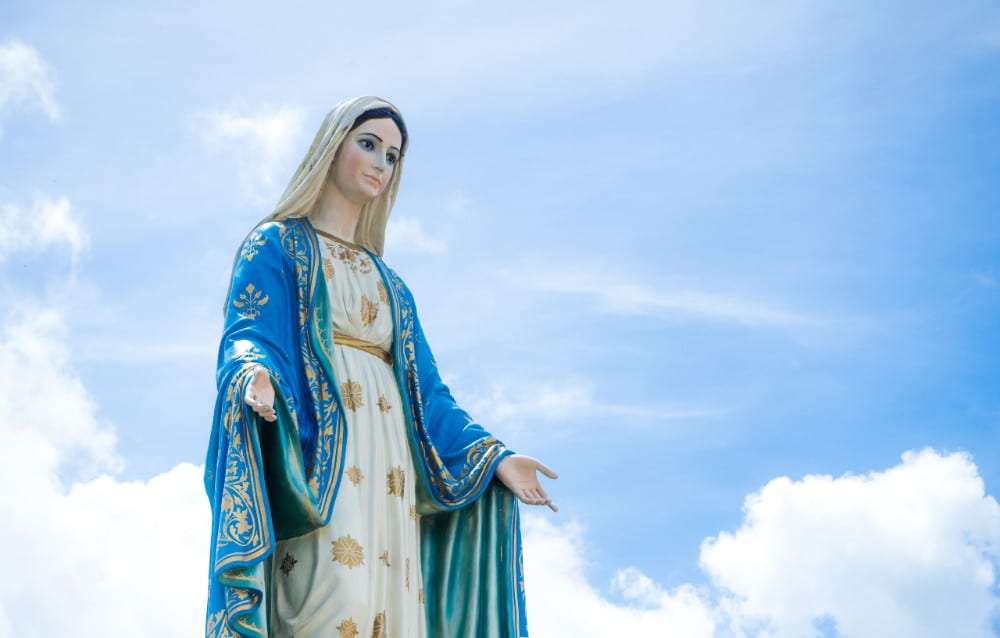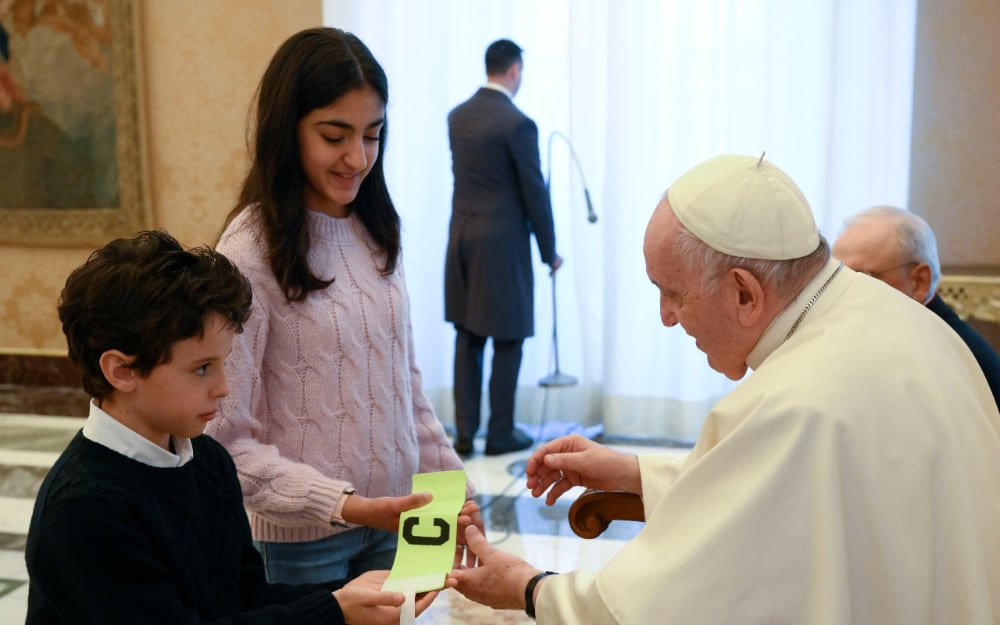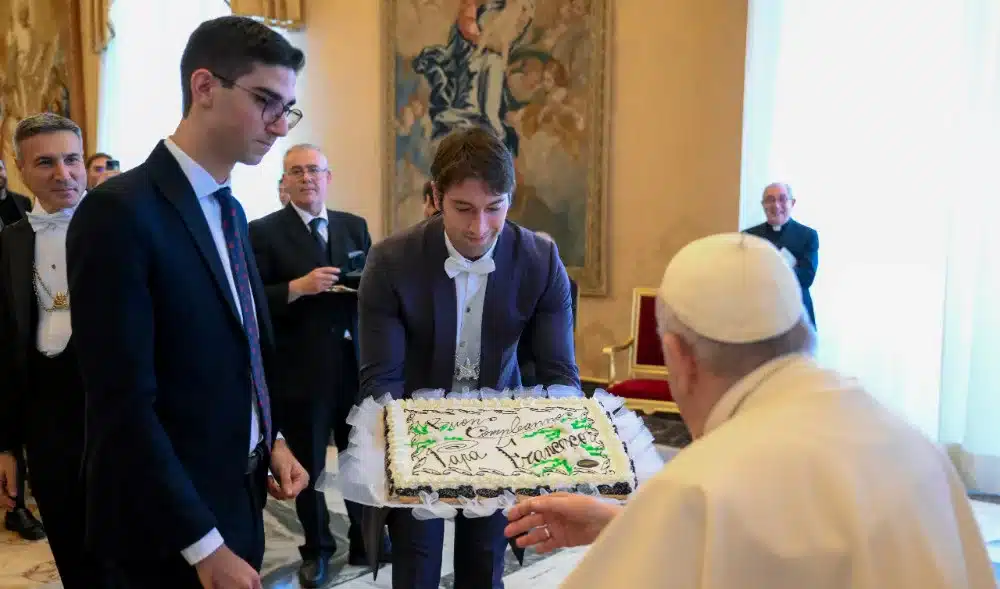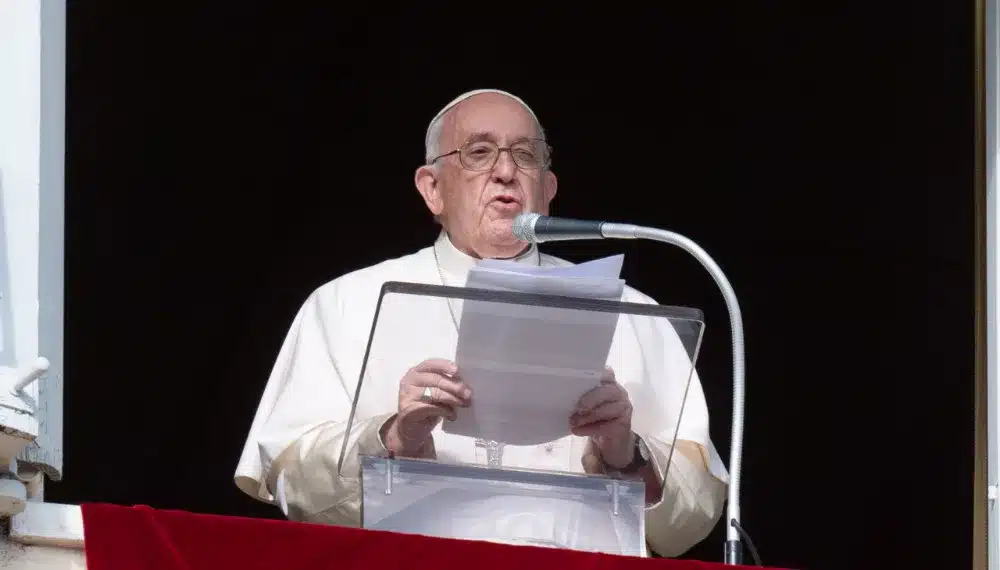My relationship with Mary had something of a rocky start when a Catholic neighbor girl tried to teach me the Hail Mary. At the age of 4, I had never heard the word “hail,” nor did I possess a discerning enough ear to tell the difference between “hail” and “hell.” We did not get very far.
As a young, smart-aleck Protestant attending Catholic school, I bristled at the “idolatrous” Marian devotions, lips sealed and hands stilled in silent … well … protest. In my own estimation, I knew the Bible better than any of my classmates and most of my religion teachers. Still, as many a convert will testify, where a little knowledge of Scripture may lead a man away from the Church, a lot of it will bring him back again — which is how I found myself on the other end of the classroom some years later, a convert teaching Catholic school religion classes and fending off arguments from teenagers almost as haughty as I had been at their age. Our Lord has an excellent sense of humor.
While my intellectual objections to Mary’s motherhood had been resolved through the process of my conversion, an iciness remained in my heart. I was no longer openly antagonistic toward Our Lady, but I was a long way off from claiming her as my spiritual mother. My husband, also a convert, felt a similar ambivalence. I’ll never forget the tone of the liturgical coordinator at our wedding as she expressed her clear distaste for our decision to forgo flowers for Mary. (In hindsight, I completely understand her displeasure at the idea of leaving a tradition honoring Mary out of the wedding. At the time, I was baffled that our cantor’s gorgeous rendition of “Ave Maria” was, in her estimation, insufficient.)
These days, honoring Mary’s motherhood and inviting her intercession over such a momentous occasion strikes me on a visceral level: It’s essential. At the time, however, such a display of devotion felt disingenuous to both me and my husband. I suspect we are not alone. For our fellow converts, and indeed for anyone who might be struggling to assent to Mary’s place of honor in our faith, here are some helpful ways to embrace Mary as our Mother.
Stop protesting
Before I could love Mary, I had to surrender all the objections I had been harboring. Like the proverbial nails in a coffin, I had to pry up each one and examine its merits in turn. Through careful examination of Scripture and the witness of the faithful, I began to see that many of my bitter protests against Mary were unfounded and even unkind. As St. Maximilian Kolbe is attributed to have said, “[We can never] be afraid of loving the Blessed Virgin too much, for we can never love her more than Jesus did.” As I read books by Scott Hahn and other apologists, studied Mary’s role in the early Church and became aware of the regard in which the Church Fathers held her, I became deeply humbled at the thought of my former antagonism. Whatever the objection — Mary’s perpetual virginity, her immaculate conception or simply the idea that she remains active in salvation history — seek the best possible explanation. Even when a search doesn’t completely resolve our struggles, the act of being open to God’s truth in a new way is itself an assent that makes room for him to work in our hearts.
Develop a devotion

Ultimately, that is where I found myself: making a conscious choice to open my heart to Mary. In one of Archbishop Fulton’s Sheen’s televised sermons, he offered this caution: “If you don’t behave as you believe, you will end by believing as you behave.” In her conversion memoir, former atheist and mother of six Jennifer Fulwiler explains that no answer to her questions was ever sufficient; the final step in her conversion was a leap of faith. It was only by choosing to live the teachings of Christ that Fulwiler finally came to understand the truth and meaning of Christianity.
That is true for our relationship with Mary as well as her son. I deeply desired a relationship with Mary, but I didn’t know how to make that leap. So, one Lent, I took Sheen’s advice regarding the moral life and applied it to my relationship with Mary. I lived as though I believed. I prayed a daily Rosary during Lent that year, and it was transformative. Somewhere in the midst of all that prayer, my heart softened, and I allowed Mary to befriend me.
Appreciate Mary’s true role in salvation
As to Mary’s role in God’s creation, Sheen offered this analogy: “God who made the sun, also made the moon. The moon does not take away from the brilliance of the sun. All its light is reflected from the sun.” Mary’s role for us is to be the reflection of the higher light, to make it easier for us, under our own weak powers, to see and comprehend.
It can be tempting to take an apologetic tack that minimizes Mary’s role in our salvation, to identify her as simply another saint. Likewise, some pious expressions of faith can make too much of our Mother, extending her reverence beyond her due. It is essential to understand that in her yes to God, Mary cooperates in our redemption; she does not make it manifest. And though Mary cooperates in a privileged way, according to St. Pope John Paul II, we also have the ability to cooperate with Christ in our redemption as we unite our sufferings to his.
Listen to Mary’s witnesses
Though by no means dogma or central to our faith, Mary’s apparitions throughout time and across the world are a powerful testimony of the love that Christ has for us. The sheer abundance of the messages that have come to the world through Mary can be a powerful witness of her role in our faith. Even (or perhaps especially) skeptics can benefit from diving more deeply into works that explore her biblical significance, her role throughout history, and the graces God offers to us through his mother still today.
Accept Mary’s motherhood in prayer
There is perhaps no greater way to know a person than to spend time with her. We can read the Bible cover to cover and study every great theological tome about Jesus and still never know him. The same is true for his mother.
The most seamless path to loving Mary for me has been watching my children do it. In their natural dependence on and trust in me, they easily accept that a mother is someone who loves them, and is often more pliable to requests than Daddy — and certainly less intimidating. Listening to my 4-year-old daughter talk to “Mama Mary” cracked open a door in my heart that had been sealed shut.
It was her witness of reliance on her Mother that inspired me to approach Mary one terrible, sleep deprived night as I sat, back aching on my toddler’s bed, balancing him atop the swell of my pregnant belly. His head was burning with fever, and his cough wracked through his tiny body, jolting us both from the brief moments of sleep we managed to steal every few minutes. Though the fever would pass, I was in anguish; I had reached my limit. There was nothing to be done, except hold my son in the darkness. It was in those moments that I asked Mary to be with me, to hold me as I held my son, to get us through until dawn.
After that night, I had another mother. I was able to recall many nights when my own earthly mother had comforted me, stroking my hair as I cried over tragedies real and imagined. That image has become a favorite springboard for prayer, and when I need a mother’s comfort, Mary is there.
‘Behold your Mother’
For those struggling to accept Mary’s Motherhood, I encourage you to pray imaginatively with John 19:25-27. Stand with John — or even be John — at the foot of the cross. Hear Jesus say to you, “Behold your Mother.” Open your heart to the immensity of the gift he offers us in the person of his beloved mother.
Two years ago, on the feast of Mary, Mother of God, I consecrated myself to Jesus through Mary. The “official” preparation period is generally 33 days. For me, learning to love Mary has taken over 30 years. That’s the wonderful thing about the gift of love: It is never too late, nor too soon.
Samantha Stephenson is the author of “Reclaiming Motherhood from a Culture Gone Mad” (OSV, $18.95).







